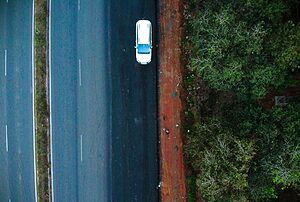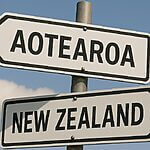If you have just clicked through from our breaking news investigation into how NIWA misled its Minister, Judith Collins, into making false public statements, then let us explain what the scandal is and how it happened.
NIWA is not only New Zealand’s ‘leading’ climate research agency, but it’s also a major global player. Modelled on America’s NOAA, NIWA conducts much of the climate research in the southern hemisphere and its scientists serve at the highest levels of the UN IPCC report process.
So, if NIWA is caught giving false information it casts doubt on scientific integrity at the agency.
THE DISINFORMATION
“NIWA climate scientists, and other climate scientists nationally and internationally, use the New Zealand National Climate Database to identify and analyse weather events or trends in climate, including the frequency or severity of weather events. They do not use NIWA’s Historic Weather Events catalogue [Centrist emphasis].
“I accept these explanations. Accordingly I confirm that I continue to have confidence in NIWA and its board” – Science Minister Judith Collins
As you may have gathered, NIWA has two databases. Minister Collins, using words drafted by NIWA itself, explains that the NZ National Climate Database (aka “CliFlo”) is the only database used by NIWA and other climate scientists for climate research. Categorically, she insists, “they do not use NIWA’s Historic Weather Events catalogue” – the second database (aka “HWE”).
EVIDENCE THAT NIWA MISLED ITS MINISTER, CAUSING FALSE STATEMENT
If NIWA and all other climate scientists don’t use HWE, then how does NIWA – through its minister – explain the following scientific studies that used HWE, not CliFlo?:

This screenshot is from an extreme events presentation by NIWA scientist Dr Rob Bell in 2018, based almost entirely on HWE data.
The references for this Australian study show it relied heavily on old newspapers from PapersPast, and also HWE – the only NIWA database it used.
The references at the end of this NZ study show it only cited NIWA HWE, not CliFlo.
The references in a DoC study cite HWE.
Another government agency, the Ministry for Primary Industries, used HWE to track historic landslides: “Some information is recorded in the NIWA Historic Weather Events (HWE) Catalog (http://hwe.niwa.co.nz/) and the New Zealand Landslide Database (NZLD) held by GNS Science. The HWE Catalog provides a comprehensive list of storms that have caused landsliding.”
When Australia’s CSIRO needed data on historical cyclones, it used NIWA HWE not NIWA CliFlo.
CliFlo didn’t make the list of another big 2023 study, but PapersPast and HWE did: “An extensive desktop literature search was undertaken, combined with video/photographic, survey, field, and eye-witness evidence of lake wave occurrence, obtained via communications with others in similar fields of research. The Papers Past website (Papers Past | Newspapers Home (natlib.govt.nz)) provided most information (especially for the period 1846–1930s), as all New Zealand’s newspapers have been scanned by the National Library, from each paper’s first publication date up until at least 1920, and some major papers, up to the late 1980s. Parliamentary papers/reports/journals, personal letters and diaries, and other historic documents have also been scanned (ongoing and updated regularly). Other information sources included:
a) Earth-science journals,
b) New Zealand Tsunami Database (Downes et al. 2017; GNS 2023),
c) New Zealand Historic Weather Event Catalogue (NIWA 2023),
d) GNS landslide and earthquake reports for specific events,
e) Readily available natural hazard reports (councils and consulting companies)”
In a 97 page report for coastal planning, two NIWA scientists drew heavily on “information from past storm events (e.g. newspaper records or the Historic Weather Events catalogue – ww.hwe.niwa.co.nz).”
In a major tornado study published by the American Meteorological Society only last month, HWE was the only NIWA database they cited.
A 2018 Victoria University study on flood risk noted: “An important repository is the Catalog of Historic Weather Events published by NIWA, which collects and compiles data from government institutions, newspapers, databases, councils and a variety of sources.”
Another Vic Uni study, clearly unaware that many big storms are missing from HWE, also relied on that database: “The New Zealand Historic Weather Events Catalogue (HWE) of the National Institute of Water and Atmospheric Research (NIWA) contains a comprehensive and detailed list of all extreme weather events in New Zealand (NIWA, 2021).”
Even NIWA climate “stars” Andrew Lorrey and James Renwick used the HWE data in a 2014 study on cyclones.

We could go on – there are a huge number of studies from New Zealand and around the world using HWE for climate research and trusting that it is accurate, yet NIWA told its minister to say that “NIWA climate scientists, and other climate scientists nationally and internationally… do not use NIWA’s Historic Weather Events catalogue [Centrist emphasis].
“I accept these explanations. Accordingly I confirm that I continue to have confidence in NIWA and its board” – Science Minister Judith Collins
So that’s how NIWA set up its minister into spreading disinformation. Clearly, on any reading of the evidence, it is a complete and utter fabrication to say that no climate scientists use HWE. Heck, even NIWA quotes HWE data in peer-reviewed studies!
The most staggering thing about NIWA’s attempt to mislead is its scale and sheer audacity. Given the overwhelming evidence that NIWA itself and other global climate research teams use and trust HWE, and the equally undeniable evidence that a large number of historic storms are missing from HWE (see Climate of Fear, Wishart 2023), discovery of the truth was only a matter of time.



















